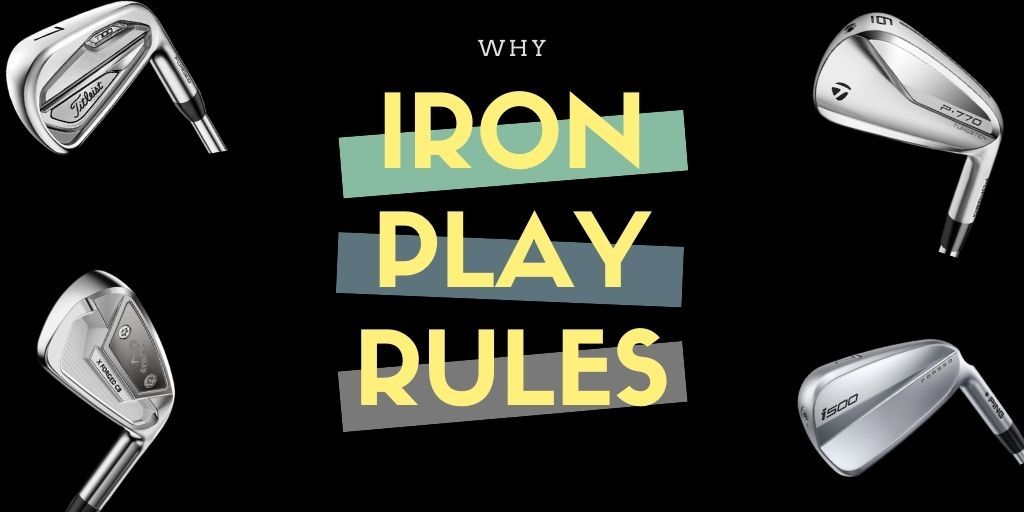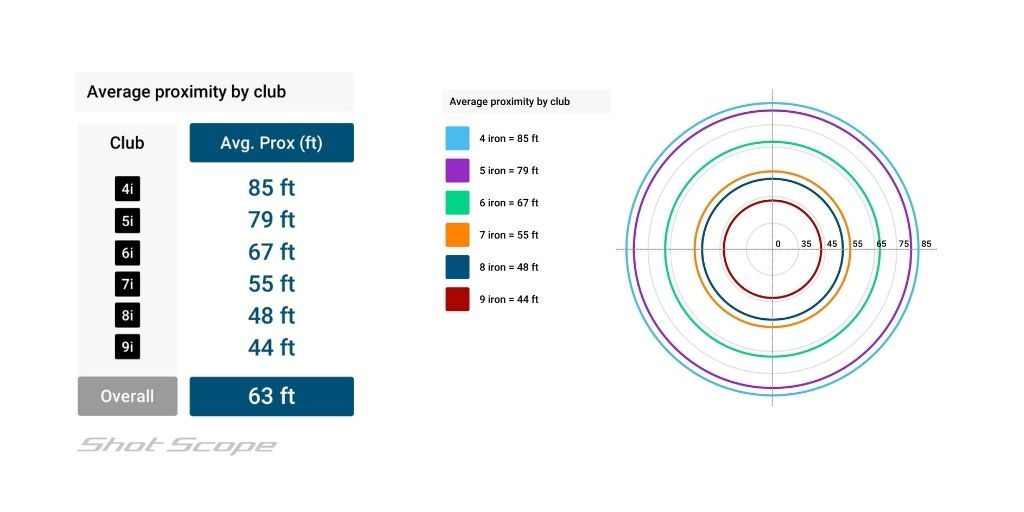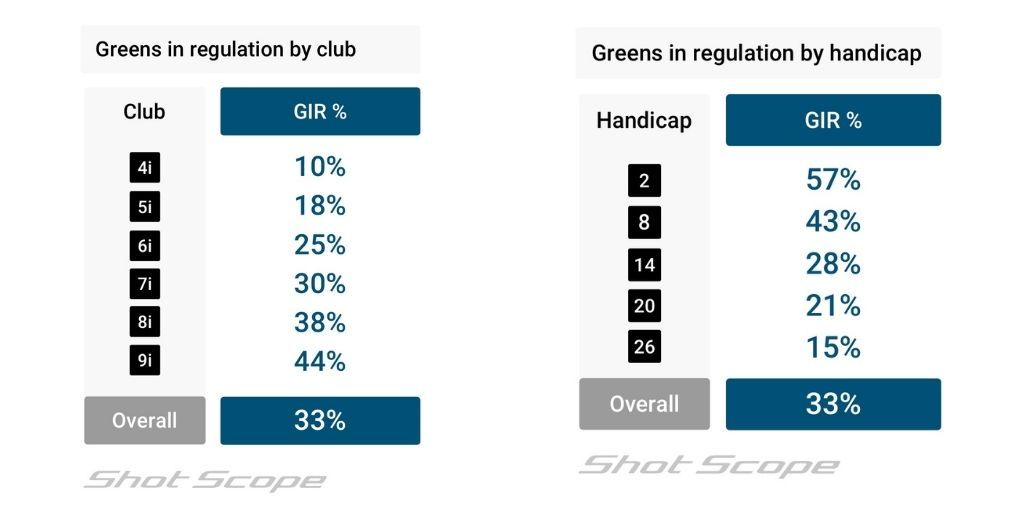
If you're a golfer who is looking to shoot their lowest scores, you're going to find many answers in your iron play. Successful approach shots require careful planning, the right information, and of course, skillful ball-striking.
In this article, I'm going to share the following:
- Why approach shots are so important
- Data from millions of approach shots courtesy of Shot Scope (how far golfers are hitting each iron, proximity, and GIR)
- The one statistic that stands above all in terms of your scoring potential
Let's dig in!
Approach Shots Are the Biggest Key to Scoring
For a long time, we didn't quite understand why certain golfers scored better than others. Luckily, Mark Broadie, a professor at Columbia University, cleared that up for all of us. After researching millions of shots using his revolutionary strokes-gained statistics (a measurement of relative performance), he came to the following conclusion:
My analysis of millions of golf shots reveals a consistent finding: Approach shots account for the biggest scoring advantage between golfers of every skill level. The best golfers also gain strokes with their driving, short game and putting games, but approach shots are the greatest difference-maker.
For clarity, approach shots encompass all shots outside of 100 yards that are not tee shots on a Par 4 or Par 5. As you know, that is a large percentage of your shots on the course, especially with your irons. For further information, I highly recommend reading Every Shot Counts.
How Far Golfers Are Hitting Their Irons
Ask any golfer how far they hit their 7-iron, and they'll likely tell you how far they think they can hit it versus how far they are actually hitting it. If someone says 165 yards, that's usually how far they can hit their 7-iron if they flush it. But what about more normal shots?
Shot Scope, a popular shot-tracking company, analyzed millions of real shots amongst their users (you can read my review of their system here). The following chart shows how far golfers at different handicap levels hit their irons on average:

As you can see, most golfers are hitting their 7-iron between 147 to 159 yards on average. And as you would expect, as the handicap level goes down, distance goes up.
If you're interested in tee shot statistics, you can check out this article that was extremely popular a few months ago.
How Close Are Most Golfers Hitting Their Irons to the Hole?
Another element of scoring that Mark Broadie proved (and that many of us suspected) is that golf is a game of proximity. All things being equal, and with very few exceptions, the closer you are to the hole, your chances of posting a lower score go up.
Here are aggregate proximities amongst golfers by club:

As I've mentioned before, this is one of the most underrated difficulties of the game. Nobody on the planet can put their golf ball where they want. As such, you have to plan accordingly (hint: don't be so aggressive with targets).
Now let's take a look at the proximity numbers for a "middle of the pack" player on the PGA Tour from various approach distances in 2020:
175 - 200 yards: 33 feet
150 - 175 yards: 28 feet
125 - 150 yards: 23 feet
100 - 125 yards: 19.5 feet
As you would expect, these numbers are significantly better. But they usually surprise most golfers. As good as PGA Tour players are, they are not hitting the ball next to the pin. What you see on TV is mostly a highlight reel.
Pro golfers' main skill is keeping the ball around the hole enough to make routine pars and some birdies. But mostly, avoiding bogey or worse.
Most golfers put way too much pressure on themselves and are unrealistic with proximity in general. Hopefully, those numbers can reset your expectations.
This leads me to my next point...
Green In Regulation is the Gold Standard for Scoring
Traditional golf stats such as fairways hit or putts per round can be misleading. That being said, greens in regulation is still a vital statistic. If anyone asks me what they can do to shoot lower scores, I usually tell them, "focus on hitting more greens per round, and work backward from there."
But what does that mean? Well, it's a combination of advice:
- Keep your tee shots in play
- Stop being so aggressive with your approach shot targets
- Make sure you have an accurate understanding of how far you hit each club on average
- Improve your ball striking ability
Looking at greens in regulation by club and handicap level, a couple of trends emerge:

For starters, if you want to give yourself a better opportunity to hit a green with your approach shot, you need to be closer to the hole. This is why finding ways to increase your distance off the tee is a worthwhile endeavor if you want to lower your handicap.
Not surprisingly, as the handicap level goes down, GIR goes up. There are very few exceptions to this rule in golf, but of course, having a stellar short game can buck this trend. But if you're looking to give yourself the best opportunity to improve, you cannot ignore this statistic.
Wrapping It Up
Understanding how golfers separate themselves from one another is an important topic. Many players assume that working on certain parts of the game will yield bigger results than they do. I can tell you without a doubt that if you do want to improve, your iron play should be a significant part of your plan.
A more efficient way to go about this process is to keep more detailed statistics, which shot-tracking systems like Shot Scope can help with. Sometimes, you can fix your proximity and GIR numbers by having a better understanding of your true iron distances and where you are missing your shots. Small fixes like adjusting your target and club selection can yield big results in scoring.
We care about the protection of your data Read our Privacy Policy